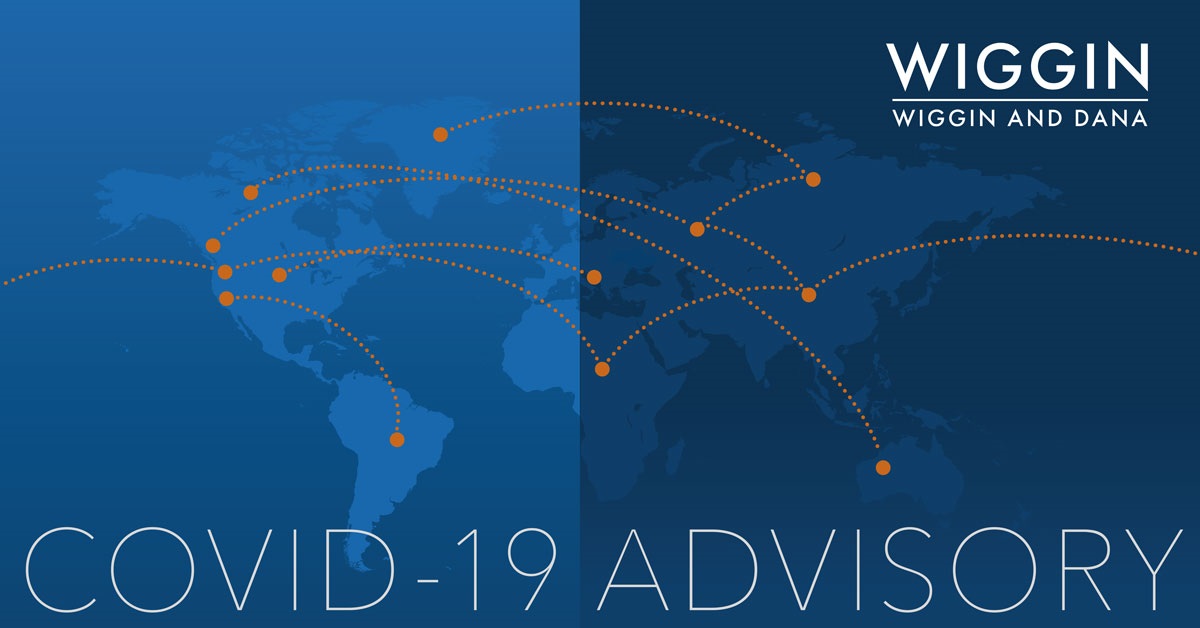COVID-19 Client Resources and Updates

CMS Broadens Medicare Telehealth Coverage Rules During COVID-19 Crisis
The COVID-19 crisis has forced the Department of Health and Human Services’ (“HHS”) Centers for Medicare and Medicaid Services (“CMS”) to rethink Medicare’s stringent and limiting telehealth rules. As federal and state governments struggle to slow the spread of the virus, they are increasingly encouraging people to stay home as much as possible and, at the same time, trying to find creative ways to increase the accessibility of the country’s health care workforce. With those dual purposes in mind, CMS significantly expanded the circumstances under which Medicare will reimburse providers for telehealth services during the pandemic.
The Coronavirus Preparedness and Response Supplemental Appropriations Act, signed into law by the President on March 6, 2020, specifically permits HHS to waive certain Medicare telehealth payment requirements. In addition, President Trump announced an emergency declaration under the Stafford Act and the National Emergencies Act on March 13, 2020, authorizing HHS, under section 1135 of the Social Security Act, to temporarily waive certain federal health care program requirements. As a result, on March 17, 2020, CMS announced a new telehealth policy to allow Medicare beneficiaries to “receive a wider range of services from their doctors without having to travel to a health care facility.” Effective March 6, 2020 and for the duration of the COVID-19 Public Health Emergency, the new policy makes several changes to the Medicare telehealth rules:
- CMS has waived the requirement that telehealth be provided only to Medicare beneficiaries residing in designated rural areas. Telehealth may now be provided to Medicare patients residing anywhere in the country.
- Whereas the Medicare telehealth rules generally required patients to be in certain types of health care facilities called “originating sites” (such as a physician office or nursing home) to receive telehealth services, telehealth may now be provided to patients in any setting – including to patients in their homes.
- Telecommunications technology with audio and video capabilities that can provide two-way, real-time interactive communication has been a traditional Medicare telehealth requirement. However, the new CMS policy allows even the use of telephones for the provision of telehealth services, so long as there are audio and video capabilities.
- HIPAA compliance dictates that the technology used to facilitate telehealth visits must meet all privacy and security standards. However, during the COVID-19 nationwide public health emergency, the Office for Civil Rights (“OCR”), the federal agency that enforces HIPAA, announced that it will waive penalties for HIPAA violations against “health care providers that serve patients in good faith through everyday communications technologies,” such as Apple FaceTime, Facebook Messenger video chat, Google Hangouts video, or Skype. Patients should be notified of the privacy risks inherent in such third-party applications and providers should enable encryption and privacy modes whenever available. Public facing applications, including Facebook Live, Twitch, and TikTok are not permitted to be used. Additionally, health insurance companies that pay for telehealth services are not covered by this OCR waiver.
- Medicare beneficiaries would generally be responsible for coinsurance and deductible amounts related to telehealth services, but under the new policy, the HHS Office of Inspector General (“OIG”) is “providing flexibility for healthcare providers to reduce or waive cost-sharing for telehealth visits paid by federal healthcare programs.”
- Medicare telehealth regulations require that the distant site provider be licensed to furnish the service under state law. To alleviate this burden, CMS announced that, across the board, it is waiving requirements that out-of-state providers be licensed in the state where they are providing services. (Note that providers should also ensure that they are meeting the licensure requirements of each state in which they practicing as well. Some states are starting to enact similar waivers to permit out of state practitioners to practice in the state temporarily during the crisis.)
Although the Coronavirus Preparedness and Response Supplemental Appropriations Act indicated that patients and providers must have an “established relationship” in order for these new telehealth waivers to apply, HHS explicitly stated that it will not conduct audits to ensure that a prior relationship existed for claims submitted during the timeframe covered by the Act. Moreover, these expansions apply regardless of the diagnosis of the patient; they are not limited to services related to patients with COVID-19.
Other Medicare telehealth rules that were not specifically waived by this new CMS policy are still in effect. For example, only certain types of providers are eligible to provide telehealth services, such as physicians, nurse practitioners, physician assistants, certified nurse midwives, nurse anesthetists, licensed clinical social workers, clinical psychologists, and registered dietitians or nutrition professionals. Also, only certain CPT codes are eligible for reimbursement when they are provided via telehealth. Services should only be reported as telehealth when the provider is not at the same location as the beneficiary. Importantly, although the geographic and place of service restrictions were removed, only traditional “originating sites” may bill for the telehealth originating site facility fee.
Note that other types of remote and digital health care, other than traditional telehealth, can be provided to Medicare beneficiaries as well, such as virtual check-ins and e-visits. These modalities each have specific billing and coding rules that must be followed.
Proponents of telehealth have long advocated for broadening access to this innovative health care delivery model. The COVID-19 crisis has pushed the needle forward as telehealth has emerged as the innovative solution to allow health care providers to serve patients without leaving the confines of their homes. Although CMS’s new policy is temporary, providers and patients alike remain hopeful that these changes will increase regulator comfort with virtual care and usher in a new golden age for telehealth.
For additional information, see:
- Medicare Telehealth Frequently Asked Questions (FAQs)
- Medicare Telemedicine Health Care Provider Fact Sheet
- Notification of Enforcement Discretion for telehealth remote communications during the COVID-19 nationwide public health emergency
- FAQs on Telehealth and HIPAA during the COVID-19 nationwide public health emergency
- COVID-19 Emergency Declaration Health Care Providers Fact Sheet
Visit Wiggin and Dana’s COVID-19 Resource Center here for additional publications and helpful links on multi-disciplinary topics that are relevant during the current COVID-19 global pandemic.

